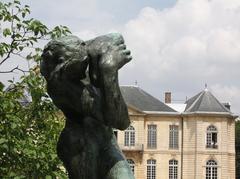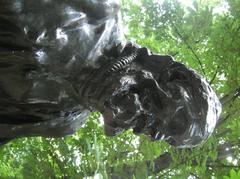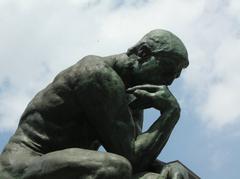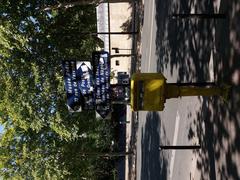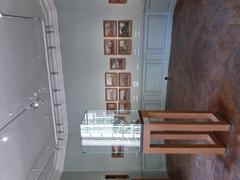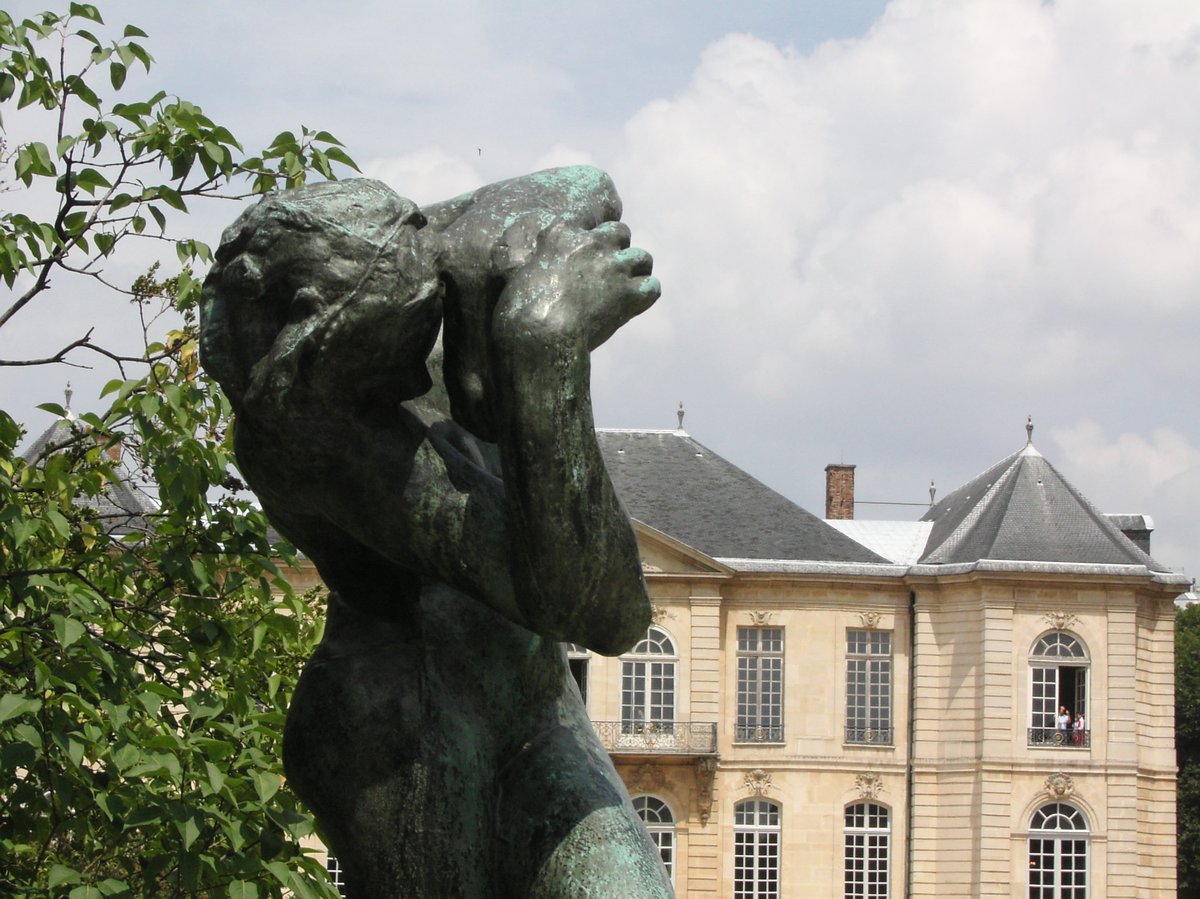
Musée Rodin: Visiting Hours, Tickets, and Paris Historical Sites Guide
Date: 14/06/2025
Introduction
Nestled in Paris’s elegant 7th arrondissement, the Musée Rodin stands as one of the city’s most captivating historical and cultural landmarks. Dedicated to Auguste Rodin, the father of modern sculpture, the museum is housed in the exquisite 18th-century Hôtel Biron and complemented by the tranquil Villa des Brillants in Meudon. The museum not only preserves over 6,600 sculptures and thousands of drawings, photographs, and objets d’art, but it also immerses visitors in an environment where art and nature unite. Whether you are planning your first visit or returning to deepen your appreciation, this comprehensive guide provides essential details about visiting hours, ticketing, accessibility, museum highlights, and practical tips for an inspiring Musée Rodin experience (musee-rodin.fr, discoverwalks.com, thetourguy.com).
Table of Contents
- Historical Background
- Visiting Information
- Museum Highlights
- Visitor Experience
- Frequently Asked Questions (FAQs)
- Key Dates and Figures
- Conclusion
- References and Further Reading
Historical Background
Origins of the Musée Rodin
The Musée Rodin’s history is rooted in Auguste Rodin’s (1840–1917) extraordinary career and his wish to share his works with the public. In 1916, a year before his death, Rodin bequeathed his entire collection—including sculptures, drawings, photographs, and an extensive assortment of paintings and antiquities—to the French state. This was on the condition that a museum dedicated to his oeuvre would be established at the Hôtel Biron, where he lived and worked during his later years (art-facts.com; discoverwalks.com). The museum opened in 1919, becoming one of France’s first major single-artist museums (musee-rodin.fr; cometoparis.com).
The Hôtel Biron: From Mansion to Museum
The main site, the Hôtel Biron, is an 18th-century rococo mansion at 77 rue de Varenne. Originally built for financier Abraham Peyrenc de Moras, it features ornate interiors and beautiful gardens (fr.wikipedia.org). The building’s varied history includes serving as a private residence and a religious institution before Rodin used its rooms as studios from 1908, filling them with his works and ultimately saving the mansion from demolition (thetourguy.com).
The Villa des Brillants: Rodin’s Meudon Retreat
The museum also includes the Villa des Brillants in Meudon, southwest of Paris, Rodin’s home and creative haven from 1895 until his passing. The villa provides a more intimate look at Rodin’s studio and personal life (musee-rodin.fr; cometoparis.com).
Rodin’s Bequest and the Museum’s Collection
Rodin’s bequest includes about 6,600 sculptures, 8,000 drawings, 8,000 photographs, and over 7,000 objets d’art (fr.wikipedia.org; art-facts.com). The collection is enriched with works by Van Gogh, Monet, and Renoir, and ancient artifacts from across the Mediterranean and Middle East (cometoparis.com; boutique.musee-rodin.fr).
The Gardens: A Living Gallery
The museum’s three-hectare garden, restored to its 18th-century elegance, is itself a living sculpture park. It displays monumental works such as “The Thinker” and “The Gates of Hell” against a backdrop of French formal landscaping and seasonal blooms (art-facts.com; discoverwalks.com). The grounds also house a 19th-century chapel, now used for exhibitions (cometoparis.com).
The Museum’s Role in Modern Art
Beyond celebrating Rodin’s legacy, the Musée Rodin is a leading institution for research, conservation, and education on modern sculpture, hosting exhibitions and fostering scholarship globally (musee-rodin.fr; boutique.musee-rodin.fr).
Visiting Information
Visiting Hours
- Hôtel Biron (Paris): Tuesday–Sunday, 10:00 AM–6:30 PM (last entry 5:45 PM). Closed Mondays and major holidays.
- Villa des Brillants (Meudon): Saturdays and Sundays, 12:00 PM–6:00 PM.
Check the official website for holiday closures and special opening hours.
Ticket Prices
- Full admission: €13
- Reduced rate: For EU residents aged 18–25 and other eligible groups
- Free: For visitors under 18, EU residents under 26, disabled visitors and their companion, and on the first Sunday of each month (October–March)
- Combined ticket with Musée d’Orsay: €22.40–€24 (valid for one entry to each museum within three months)
Tickets can be reserved online for convenience and to skip the line (musee-rodin.fr). Paris Museum Pass is accepted and offers fast-track access.
How to Get There and Accessibility
Address: 77 Rue de Varenne, 75007 Paris
Metro: Varenne (Line 13) or Invalides (Lines 8, 13, RER C)
Bus: Lines 69, 82, 87, 92
RER: Invalides (Line C)
The museum is wheelchair accessible, with ramps and elevators. Special access and free entry are available for disabled visitors and one companion (TheTourGuy). Assistance can be arranged at the accessible entrance at 21 Boulevard des Invalides.
Museum Highlights
Iconic Works
The Musée Rodin features an unparalleled collection of Rodin’s masterpieces, including:
- The Thinker (Le Penseur): Symbolizing contemplation, prominently displayed in the gardens.
- The Kiss (Le Baiser): A marble depiction of passion, located inside the mansion.
- The Gates of Hell (La Porte de l’Enfer): A monumental bronze portal inspired by Dante’s “Inferno.”
- The Burghers of Calais: A powerful ensemble commemorating civic heroism.
- Balzac: An expressive tribute to the French novelist.
Many of these works are displayed both indoors and outdoors, allowing visitors to experience them in natural light and different settings (discoverwalks.com, thebettervacation.com).
The Sculpture Garden Experience
The museum’s garden is a highlight, with themed areas filled with roses and hydrangeas, reflecting pools, and mature trees. Not only do the gardens offer a peaceful escape, but they also allow visitors to view Rodin’s sculptures as he intended—in harmony with nature (TravelCaffeine, Headout).
Camille Claudel and Other Artists
Special galleries are dedicated to Camille Claudel, Rodin’s talented student and muse, showcasing works like “The Waltz” and “The Age of Maturity” (Headout). The museum also features paintings by Van Gogh, Monet, and other artists from Rodin’s collection.
Visitor Experience
Facilities and Services
- Cloakroom: Free, located at the entrance to the galleries; backpacks and large bags must be checked (AmberEverywhere).
- Audio Guides: Available in English and other languages for a fee.
- Photography: Allowed without flash in most areas.
- Café-Restaurant: L’Augustine offers snacks and drinks on a terrace overlooking the gardens (SortirAParis).
- Gift Shop: Sells books, art reproductions, and souvenirs.
Accessibility and Family-Friendliness
The museum provides accessible entrances and facilities, with free admission for disabled visitors and a companion. Families can enjoy interactive trails for children using tablets, and the Atelier Rodin hosts workshops for young visitors at select times (SortirAParis).
Practical Tips
- Duration: Allocate 2–4 hours for a relaxed visit covering both the mansion and the gardens (AmberEverywhere).
- Best Times: Visit early morning or late afternoon to avoid crowds. Spring and autumn are ideal for the gardens.
- Combine Visits: The museum is within walking distance of Les Invalides, Musée d’Orsay, and the Eiffel Tower (TravelCaffeine).
- Special Events: Check the museum calendar for exhibitions and cultural events like Nuit des Musées.
Frequently Asked Questions (FAQs)
Q: What are the Musée Rodin’s visiting hours?
A: Tuesday–Sunday, 10:00 AM–6:30 PM (last entry 5:45 PM); closed Mondays and certain holidays.
Q: How much do tickets cost?
A: Full admission is €13; free for visitors under 18 and EU residents under 26; combined tickets and free first Sundays (October–March) available.
Q: Is the museum accessible?
A: Yes, the museum offers barrier-free access and free entry for disabled visitors and a companion.
Q: Can I take photos?
A: Photography is allowed without flash.
Q: Are guided tours available?
A: Yes, official guided tours and audio guides are offered; advance booking recommended.
Key Dates and Figures
- 1840: Auguste Rodin is born.
- 1908: Rodin moves into the Hôtel Biron.
- 1916: Rodin donates his works to the French state.
- 1917: Rodin passes away.
- 1919: Musée Rodin opens to the public.
- Today: The museum welcomes over 700,000 visitors annually and houses more than 6,600 sculptures.
Conclusion
The Musée Rodin offers a harmonious blend of art, history, and natural beauty, making it a standout destination among Paris historical sites. Its manageable size, intimate atmosphere, and extensive collection of masterpieces provide a rewarding experience for art lovers and casual visitors alike. For the best experience, plan your visit in advance, consider booking a guided tour, and take time to explore the enchanting gardens.
For more Paris travel tips and museum guides, explore our related articles and download the Audiala app for exclusive content and audio tours.
Visuals and Media Suggestions
- High-quality images of “The Thinker,” “The Kiss,” and the Hôtel Biron.
- Panoramic shots of the sculpture gardens with seasonal flowers.
- Alt text including keywords like “Musée Rodin visiting hours,” “Musée Rodin tickets,” and “Paris historical sites.”
- An interactive map and virtual tour links for enhanced planning.
References and Further Reading
- This is a sample text. (musee-rodin.fr)
- This is a sample text. (discoverwalks.com)
- This is a sample text. (thetourguy.com)
- This is a sample text. (parisbypierre.com)
- This is a sample text. (travelcaffeine.com)
- This is a sample text. (sortiraparis.com)
- This is a sample text. (ambereverywhere.com)
- This is a sample text. (parisinsidersguide.com)
